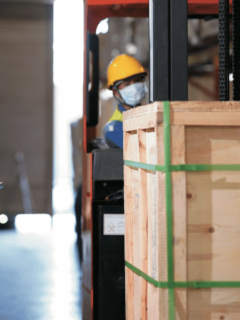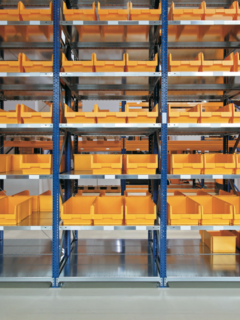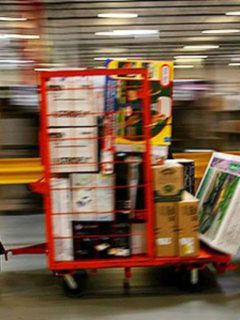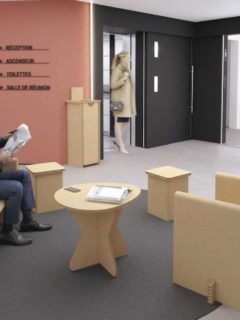Have you ever wondered what the packaging of the future will look like? How it will manage to adapt to consumer expectations, current and future legislation and, above all, to the necessary environmental considerations that drive our societies?

To project ourselves into this future, we interviewed Fabrice Peltierto project ourselves into this future, we interviewed the designer and eco-design consultant, on the occasion of the release of his new book, The packaging revolution – First period: The emergence of new solutions.
He talks about the path that led him to develop his eco-design methodologies and his vision of the packaging of the future.
Ready to look ahead to the next ten years?
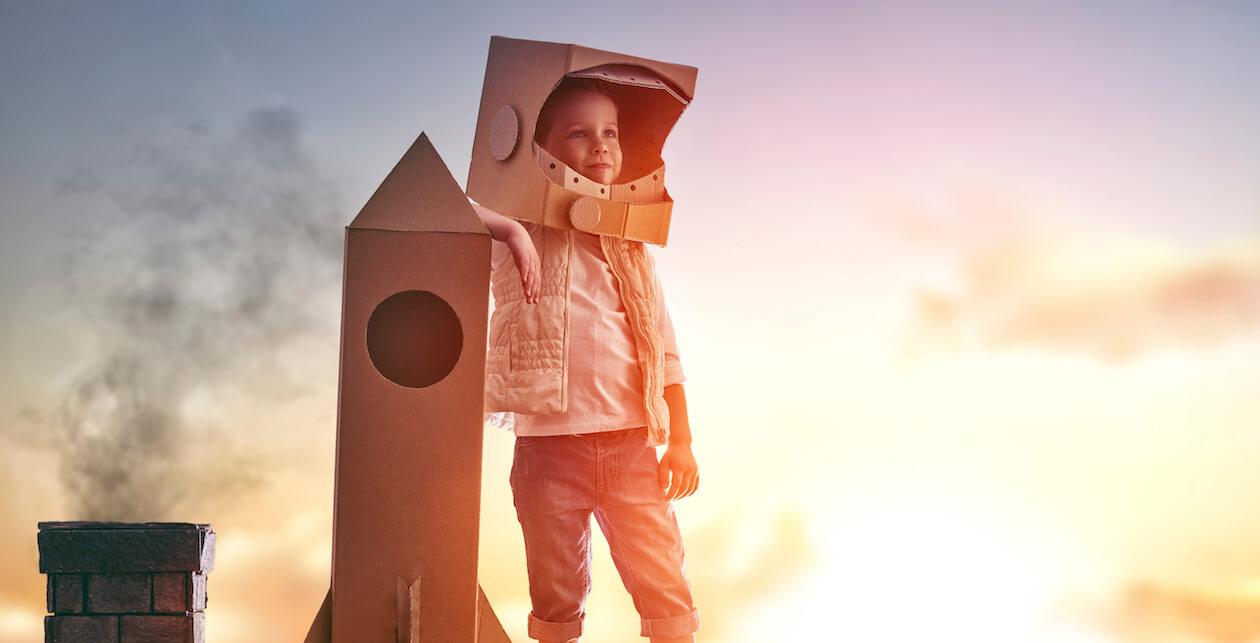
Fabrice, what was your first relationship with packaging?
Today, I can retrace my steps and understand that it all began in my childhood. More than 50 years ago, I was a child living in the countryside between Lozère and Ardèche. In those small French villages, the fate of waste was clear: it often ended up abandoned at the bottom of a bend at the exit of the town.
When I was just ten years old, my brothers and I founded an association for the protection of nature, and at weekends we emptied the rubbish dumps: this was my first contact with packaging. I was not yet fully aware of its environmental impact: it was just rubbish, and I was thinking more about how not to hurt myself with it, how not to cut myself, for example, with rusty cans and pieces of glass.
So I was exposed to an education and a lifestyle close to nature, and became aware of environmental protection, waste, rubbish and consequently packaging through this. It was not an activist life, but rather a sensitivity and a lifestyle that developed early on in my life.
Was it this childhood that pushed you towards packaging design?
Not really. I wasn’t bad at drawing. I won my first drawing competition in the 1970s: it was a competition organised by UNESCO to promote environmental protection in the face of the first ecological disasters. It was this attraction for drawing that led me to study printing and graphic design at the École Estienne in Paris.
I immediately became a freelance graphic designer, and it was there that I began to experience packaging from a professional point of view: one of my first clients asked me to create a packaging, and other similar graphic creations followed.
I then realised that the packaging I had identified as waste as a child was now really me creating it.
How did you go on to create more environmentally friendly packaging?
At the beginning of the 1990s, people started talking about recycling packaging. At the same time, a political ecology was born, but I was not very interested in it, as the environment is for me an a-political cause, a rather humanistic value.
As soon as Eco-Emballages was set up, I became interested in recycling and became a fervent promoter. I also tried to spread the message very quickly that packaging designers were responsible for the environmental impact of their creations and that, if they did nothing, they would soon be guilty. In parallel with my activity as a designer, I write articles, notably in Emballage Magazine, but also books.
As a packaging designer, I used to try to take care of packaging “from the cradle to the grave”, but I realised that I was actually just “dressing the dead”.
So, about ten years ago, I put into practice an idea that had been around for a long time: to separate from my agency and become a packaging consultant. I realised that, as a designer, everything I was promoting in terms of eco-design was not sufficiently taken into account by my clients. In order to help companies do better, I had to take on the role of ‘consultant’, not ‘creative executor’.
I now pass on my eco-design methodology to my clients, and at the same time, as an elected official in my village of Combloux, I take care of waste management. I have thus come full circle. I am really concerned with packaging “from the cradle to the grave” and hope to make a real contribution to making packaging less and less of a problem for the environment.
How do you explain the massive return of paper and cardboard packaging in current business use?
It’s not so much that companies are turning to these types of packaging on a massive scale: they are turning away from plastic first and foremost. This realisation that plastic is harmful to the environment was essentially triggered by the focus on marine plastics, which are invading our seas. This notion touches on two very important items for humans: the way in which plastic impacts on animals, and the way in which it harms human health.
It is this plastic bashing, reinforced by legislation that seems to focus on plastic, that is driving companies to move towards paper and cardboard instead, to minimise the use of plastic.
However, unfortunately, in reality, there is still more communication around these eco-packaging initiatives than concrete facts..
In your opinion, will plastic packaging totally disappear from business practices?
Today, it isdifficult, if not impossible, to do without plastic. Plastic has become indispensable in our lives, and we have not yet found an alternative. For example, without plastic, during the Covid-19 pandemic, we would have struggled to cope: syringes, doses of vaccine, protection for medical staff, respirators… everything is made of plastic!
To come back to packaging, it is important to understand that plastic is not the problem as such. The problem is rather the use of plastic, and in particular its single use. Companies still ask themselves too much about “how to use plastic”, rather than “why to use it”. All this leads them to overprotect, overpack and overconsume this material.
In short, companies use plastic in their packaging as they would create Ariane rockets to fetch their bread from down the street! And this plastic packaging has such protective and resistant capacities (not necessarily useful), that it ends up in nature, and stays there.
In my opinion, plastic is not going to disappear, but its use needs to be totally rethought:
- On the one hand, manufacturers need to ask themselves what the real need is for protection of their products. For example, do we really need envelopes with plastic bubble wrap? This is to avoid an “over-functional” use of plastic.
- On the other hand, consumers must also ask themselves whether they really need this plastic packaging. This reflection is only done today at the moment when they throw away their packaging: their reflection must go back to the moment they buy.
It is therefore up to manufacturers as well as consumers to question themselves.
What do you think are the most promising packaging trends for the future?
I talk about this in the first period of The Packaging Revolution: this revolution is bringing several interesting trends.
For example, we are seeing the development of renewable materials (e.g. plastics made from cellulose) and recycled materials.
This revolution has sounded the death knell for non-recyclable packaging. Tomorrow, it will be impossible to create packaging that cannot be recycled. But that is not the basis of this revolution per se.
However, the trends that will really revolutionise packaging are those that put an end to the notion of single use. The objective must be to completely reinvent packaging around the notion of multiple use, of reuse.
But on the other hand, this reuse trend touches on the problems of new distribution methods. Single-use packaging made sense for network sales (hypermarkets, essentially), where the consumer went to the product. Now, it is increasingly the product that goes to the consumer.
This is why we are seeing the emergence of levers that are in line with this revolution: the development of materials of renewable origin (for example, plastics made from cellulose), or recycled materials.
In short, the most promising trends are not the packaging itself, but new ways of packaging, in reusable containers.

Your book talks about “the first period of the packaging revolution”, what do you think will be the main thrust of the next period of this revolution?
Next year the second part of my book will come out: it will be subtitled Experimenting with new models, so the second period of this revolution will be experimenting with some of the solutions I talk about in the first book, to see which ones need to be developed massively.
Experimenting with reuse models, new packaging models, new distribution systems… All this requires time! We will undoubtedly see the emergence of new packaging solutions; but above all, we are reaching a point where we need to test, to see the results of these solutions, in order to choose what really works.
If you had to describe the packaging of the future in a few words, how would you describe it?
The packaging of the future is bound to be..
- Recyclable
- Recycled (i.e. made from recycled material)
- Lightweight
- And will have the same functionality as today’s packaging
But I would like to go further: the packaging of the future is simply “the right packaging”: the right material, the right quantity… Today, we live in an era of “over”: over-functionality, over-packaging, over-consumption… Our goal must be to replace the “over” with the “right“. And that’s what the book I’m releasing in September is about, which is called Packaging, it’s useless! except….
What advice could you give to a company that wants to think about the future of its packaging?
First of all, I would advise them tostop making decisions in silos. It is necessary to get all the company’s departments around the same table, and to work together on a solid methodology. This will avoid transfers between the different divisions.
But above all, I would advise them to carry out their reflection with real conviction, because if we start from the principle that eco-responsible packaging is a competitive advantage, that it is a consumer demand, or that the law requires us to do so, we necessarily start with a handicap. We have to move forward with a real commitment, which allows us to make the right decisions.
Why did you choose to have the CEO of the RAJA Group write the preface to your book?
I had already planned the release of the book with two prefaces: those of Brice Lalonde (former Minister for the Environment) and Brune Poirson (former Secretary of State for Ecological Transition).
Then I met Danièle Kapel-Marcovici, CEO of the RAJA Group, to present the book to her and to discuss the subject. One thing led to another and we realised that our visions of packaging and its future had a lot in common, and had done for a long time!
So Danièle suggested that I create a special “RAJA” edition of the book, with a preface based on the 5 R’s of RAJA. This echoed the R of the Packaging Revolution, and was so close to what RAJA does on a daily basis, that it seemed only natural.
So RAJA produced this edition, with an introduction by Danièle, to explain why the company was joining the packaging revolution. RAJA had already been in its revolution for several years, and was convinced that this revolution was indispensable, and that it was a driving force behind it. These are two similar destinies that came together, in the end.
What are your next projects?
In September, my new book, L’emballage, ça sert à rien!will be published, except….The title is provocative, but the idea is above all to promote “fair packaging”, which we spoke about earlier.
I want to explain this concept and give the keys to developing ‘fair packaging’: for products sold in packaging, for products sold in bulk, by mail order, for restaurants, but also for ‘fair zero packaging’, because just because the end consumer does not see the packaging does not mean that it was not necessary to give him access to the product… I remind the reader of all the functions of packaging, all its obligations, and then I propose a methodology for developing this ‘fair packaging’.
At the same time, as a consultant, I continue to support many companies. This is my real job, before being an author: I help large groups and SMEs to make their packaging transition as it should be.
__
Thank you to Fabrice Peltier for this inspiring interview! If you want to find out more about the packaging of tomorrow, order the first volume of The Packaging Revolution now.











